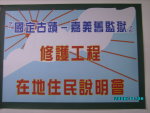Renovations
According to the "World Heritage Convention" instituted by the United Nations Education, Scientific and Cultural Organization, the extent of preservation of historical monuments can be divided into six types from least to greatest: maintenance, preservation, reinforcement, restoration, replication, and reconstrcution. However, these six categories produce two opposite views. In the spirit of preservation of historical monuments, maintenance, preservation, and reinforcement insist on preserving the original form of historical monuments without damaging it. The other three, however, emphasize the appearance and effects of repair – with new architectural materials and construction, the effect of repair is complete; although the appearance conforms to original forms and methods, it is completely divorced from the original spirit of historical monument preservation.
Principles for repair
In order to allow historical monuments to remain historical monuments for ever, any repair work must only use minimal interference. Our work is to preserve historical monuments rather than to re-create new historical monuments. Therefore, it is important to prevent the cross-interference of different periods of history. It is necessary to emphasize thefirst three treatment concepts, especially light repairs, and avoid new creations. The things that can be preserved should be preserved and reinforced, and undamaged portions should be maintained.
- Genuineness and primitiveness of historical monuments
- Preservation of original materials and preservation of original form
- Identifiability
- Reversibility
- Emphasize the importance of scientific preservation
-
Researched and organized by this team
-
picture source:Chen Wen-long Architectural Firm
-
Old Chiayi Prison local hearing information, November 8, 2008
-
Planning and Research Report on Renovation and Reuse of the Old Chiayi Prison as A Historical Monument of Chiayi City
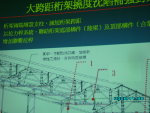
(Old Chiayi Prison local hearing)
(picture source:photo by this team)
Primitiveness and genuineness do not refer to the "original conditions," but rather to the "conditions last known." We seek to present the "sum total" of historical diversity. Even though it is impossible to see theoriginal conditions of the historicalmonument, we are happy to find the change that is better preserved. We also respect each of its changes that aid it under different contexts and different raw materials that are available.
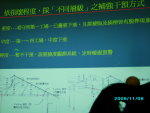
(Old Chiayi Prison local hearing)
(picture source:photo by this team)
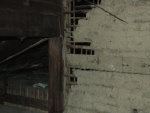
(Concrete with straw mixed)
(picture source:Chen Wen-long Architectural Firm)
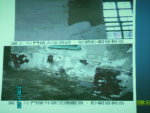
(Old Chiayi Prison local hearing)
(picture source:photo by this team)
In the process of repair, perhaps modern technological repair techniques have yet to mature, sometimes it is difficult to evaluate what the optimal repair method is. At this time, we need some emergency coping measures, and hope that the next generation of technology could have more precise repair methods. We must install some new items in some places, but these items must be reversible and removable to await the development of technology. These items must be easily removed without harming the historical monuments.
With the development of technology, we must select correct methods to correctly utilize existing technologies and techniques to complete repairs that could not have been done before. The point is, even though technology is constantly advancing, have we really effectively utilized advantages that did not exist in the past? Correct usage of such protective technologies such as pesticides and surface applicants that do not harm the historical monument itself will be a significant issue.
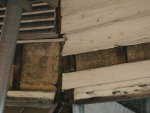
(Concrete with straw mixed)
(picture source:Chen Wen-long Architectural Firm)
Various different views and principles for the purpose of preservation and renovation were introduced above. However, rules are ultimately only rules, whether they can be followed are another question. In the past, the Old Chiayi Prison had been repaired many times quite widely, but it has not really been improved. In some cases, due to the shortcomings in technology and attitudes, even more problems were created after renovation. In the past, when engineers repair cracks in the wooden beams, they even used a lot of superglue; when they repainted, they repainted over the metals in front of the doors. Such perfunctory and careless work made many people begin to directly face this issue, and they held hearings before starting work. These examples show what is wrong, but also form warnings for the future: repair of historical monuments require professional engineers, the rules and principles must be read and understood, and there must be suitable understanding of all conditions within the prison. Repair work could not be so carefree as in the past.
